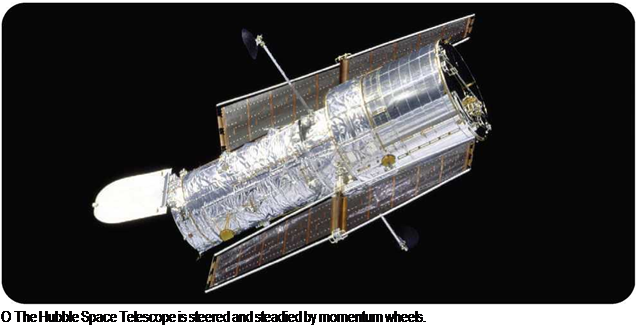Angular Momentum
The momentum of an aircraft or spacecraft traveling in a straight line is called linear momentum. The momentum of something that spins is called angular momentum. An object’s total angular momentum stays the same if no other
 |
forces act on it. This is also known as the law of conservation of angular momentum. It can be used to control the movement of a satellite in space.
The direction in which a satellite points is known as its attitude. Devices called momentum wheels, or reaction wheels, are often used to control a satellite’s attitude. Inside the satellite, three wheels at right angles to each other are spun by motors. If a wheel is made to spin in one direction, then—to conserve angular momentum—the spacecraft must spin in the opposite direction.
The advantage of using momentum wheels to turn a satellite is that they use no fuel. If rocket thrusters or gas jets were used for attitude control, the satellite could only be controlled for as long as the fuel or gas lasted. After that time, the satellite would be out of control.
Momentum wheels should keep working as long as the satellite because they are powered by electricity generated from sunlight by solar panels.
Momentum wheels can turn a satellite to point at a precise part of the sky. The Hubble Space Telescope can take several hours to make an image of a very distant star or galaxy. It must point in exactly the same direction, without wavering, to capture a sharp image while it orbits Earth. The telescope uses momentum wheels to achieve this. Most Earth-orbiting satellites use momentum wheels to keep their antennae, solar panels, cameras, and other instruments pointing in the right direction.
N
SEE ALSO:
• Force • Gravity • Hubble Space
Telescope • Laws of Motion • Rocket
• Satellite •Speed
_______ I_________ J










